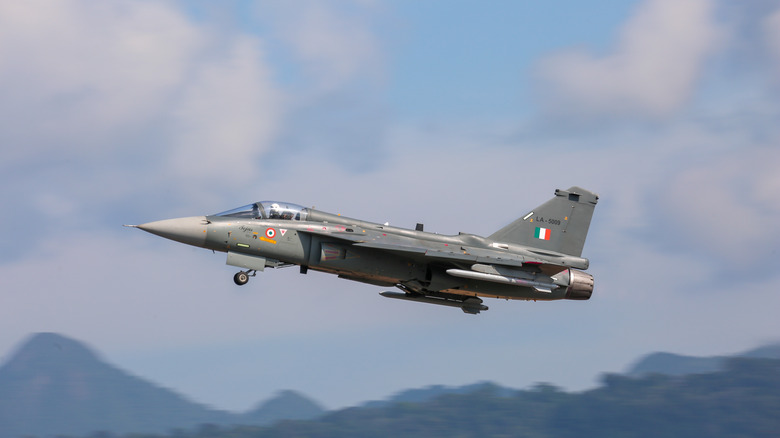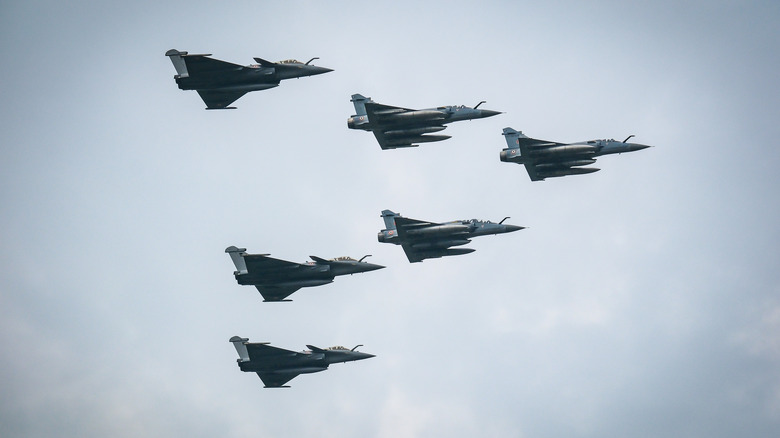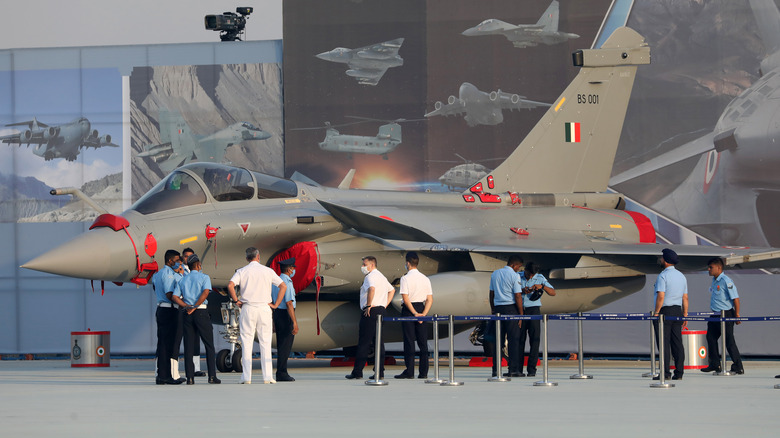What Makes The HAL Tejas Light Combat Aircraft Such A Big Deal For India
Designed by the Aeronautical Development Agency (ADA) and the Aircraft Research and Design Centre (ARDC) of Hindustan Aeronautics Limited (HAL), the Light Combat Aircraft (LCA) is a 4.5 generation, all-weather, and multi-role aircraft, which is capable of offensive air support, close combat, and ground attacks. The HAL Tejas is the smallest and lightest Multi-Role Supersonic Fighter Aircraft of its class.
Equipped with various state-of-the-art technologies, the HAL Tejas includes features such as relaxed static stability, an integrated digital avionic system, and advanced composite materials for its airframe. In addition, a source claimed to Financial Express that the HAL Tejas variants are an attractive option for countries looking to acquire trainers/fighters in the LCA class, such as Malaysia and Argentina.
In November 2023, the Indian Ministry of Defense shared that two IAF Squadrons have become fully operational, with another 83 more LCA Mk 1A scheduled for delivery starting February 2024. In its press release, it shares that HAL can build up to 8 LCA each year, with this number set to increase soon.
The launch of the HAL Tejas, which means "Radiance" in Sanskrit, marks an important shift in the Indian Air Force's (IAF) fleet modernization strategy. Here's why.
Why building fleets of indigenous aircraft matter
According to the WDMMA Global Air Powers Ranking (2023), the IAF ranked 6th with a score of 69.4, above China's People's Liberation Army Air Force and below only the various branches of the U.S. Armed Forces and Russia. The WDMMA stresses that its rankings are not simply the number of aircraft but also its quality and inventory mix. Aside from this, it also considers force experience for its annual ranking.
In 2020, the India-China border clash in its contested Himalayan borders was the worst it has experienced in decades. It is speculated that this event triggered the Indian government into a crash procurement to strengthen its air force, which only had 31 squadrons at the time.
In February 2023, the Indian Air Force (IAF) acquired 114 fighter jets for its ongoing 500-fighter aircraft acquisition process. In line with the IAF's effort to boost its dwindling fighter strength, the acquisition is set to help the IAF reach its target of 42 squadrons.
At the time, The Hindu claimed that Air Marshal Narmdeshwar Tiwari, Deputy Chief of Air Force, said that delays were due to ongoing evaluation of their Make in India efforts, which encompasses capabilities for upgrading locally instead of relying on a foreign manufacturer.
Although the HAL Tejas still uses an American engine, the Indian Ministry of Defense confirmed that the Transfer of Technology for its manufacturing had been negotiated during the Prime Minister's U.S. visit in June 2023.
Reducing IAF dependence on foreign powers
In increasingly complex political environments, it makes sense for any country with the capacity to serve the needs of its own defense requirements to reduce its dependence on foreign powers. Since its independence in 1947, India has relied on Russia for most of its arms imports. However, this relationship seems to be changing in recent times.
According to the Stockholm International Peace Research Institute (SIPRI), there has been a 37% drop in Russia's share of India's arms import market between 2013 and 2017 and 2018 and 2022. Additionally, earlier this year, the IAF confirmed it had issues with its Russian suppliers due to its ongoing war in Ukraine.
Referring to an unspecified "major delivery," an IAF representative told an Indian parliament committee, "They have given us in writing that they are not able to deliver it." Despite this, the IAF still relies on Russia for various parts of its fleet, including the Su-30 MKI. The Su-30 MKI replaced the MiG-21 supersonic jets, which were in service for 60 years.


